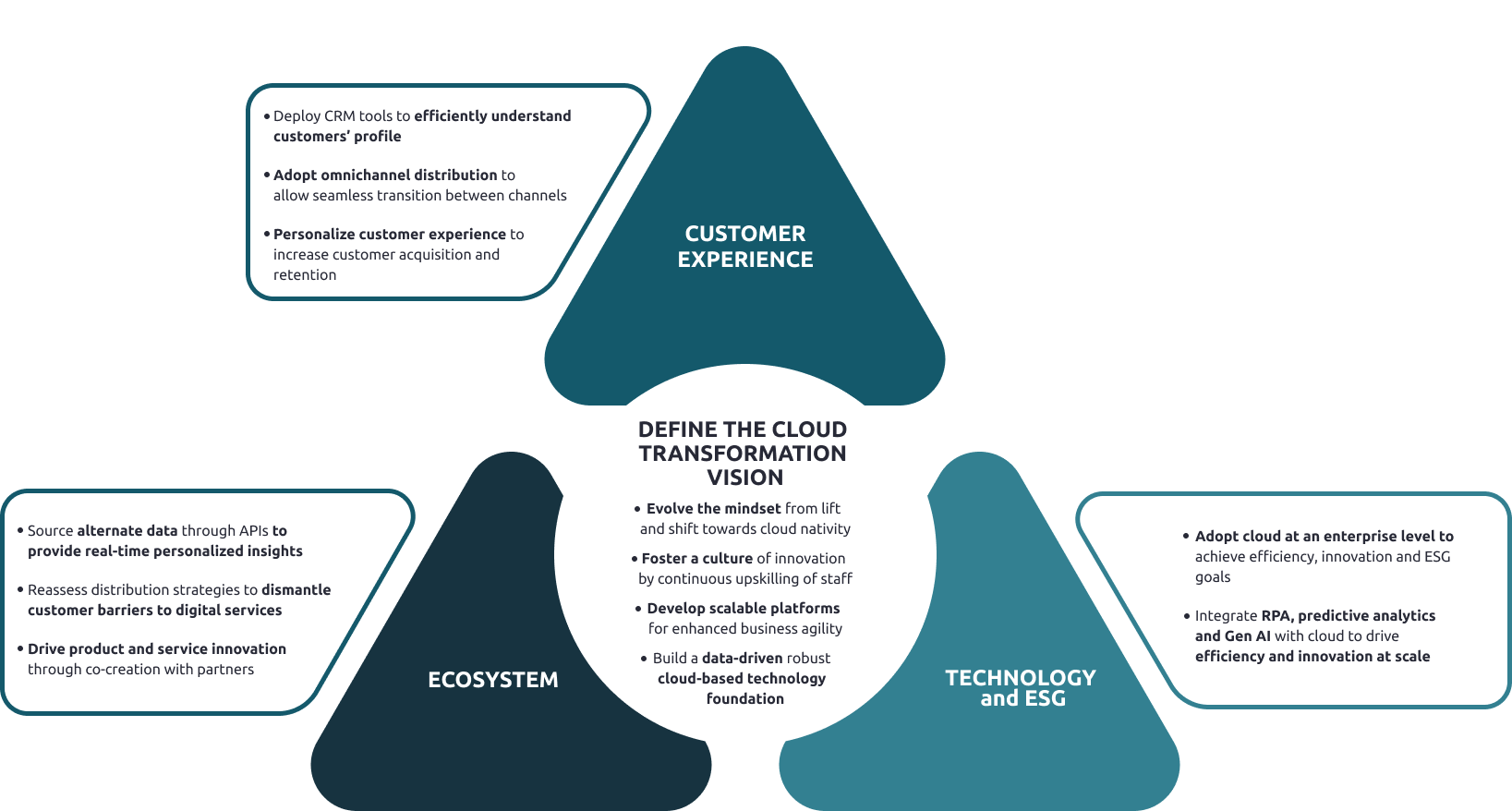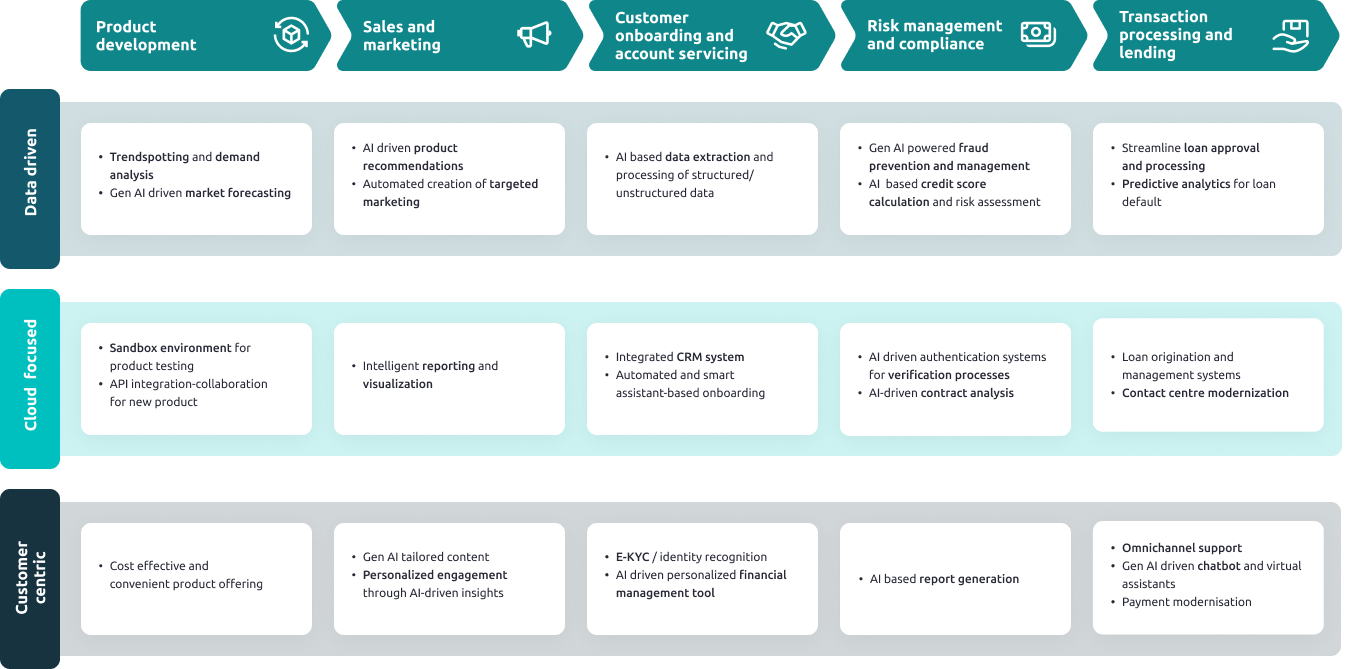The published Capgemini Research Institute’s World Cloud Report for Financial Services 2025 reveals a clear divide between how traditional and new-age financial institutions view their cloud technology investments. Most banks and insurers adopt cloud solutions with the primary business objective to drive operational efficiency (84%), while fintechs and insurtechs are pursuing cloud to accelerate sales (62%). The analysis further suggests only 12% of financial services organizations can be considered ‘cloud innovators”.
Adoption of Cloud Solutions
Financial institutions are navigating a tough landscape of challenges, such as data collection and management inefficiencies, cybersecurity vulnerabilities, complex regulations, and changing customer expectations. Recent reports indicate that banks and insurers increasingly adopt cloud solutions to address these issues. This shift is reflected in a 26% rise in mentions of cloud-related terminology in the annual reports of the top 40 tier-one banking and insurance firms worldwide from 2020 to 2023. Despite this trend, organizations encounter significant obstacles in realizing the full value of their cloud investments.
Operational challenges impact C-level executives’ decisions and slow the anticipated return on cloud transformation efforts. Less than 40% of executives report being highly satisfied with the results of their cloud solutions, noting limitations in areas such as reduced operational costs (33%), scalability (27%), innovation speed (26%), data and analytics capabilities (24%), and security and compliance (21%). The report points out that many financial institutions face difficulties because they use a lift-and-shift method for cloud migration. This leads to faster scaling that results in unexpectedly high costs, complicated pricing structures, and ineffective governance and management practices.
Read: Identity Fraud: How Much Banks Lost in 2024?

“Cloud adoption should be viewed as the start of a transformative journey that fuels long-term business growth, rather than the end game or destination. What’s clear from our research is that while the technology is seen by financial institutions as a building block, some firms still consider cloud a cost-saving measure, whereas innovative disruptors leverage it to redefine their operations,” said Ravi Khokhar, Global Head of Cloud for Financial Services at Capgemini. “By taking a cloud native approach to foster a culture of innovation, banks and insurers will be better placed to deliver new products and services, enter new markets, and increase customer satisfaction. With generative AI now top of the boardroom agenda, a cloud-based technology foundation can also help the industry maximize investment in new technologies at scale.”
Read: 10 AI ML Applications in the Identification and Prevention of Different Types of Fraud
Capability Gaps in Traditional Financial Institutions
Banks and insurers hold a wealth of personal, financial, and transactional data about their customers. However, they face multiple challenges in handling and keeping this data secure. According to the report, three main concerns were highlighted by the majority of industry executives:
- Legacy systems impeding siloed data integration (71%)
- Protection of customer data and difficulty in maintaining privacy (70%)
- Lackluster data quality, including incorrect and missing information (69%)
Read: Top 10 Trends Of Customer Experience: Why CX is the Cornerstone of FinTech Success?
Overview of DORA and Regulatory Challenges
With Europe’s Digital Operational Resilience Act (DORA) set to start in January 2025 and increasing regulatory pressures worldwide, financial institutions will soon need to meet tougher compliance rules. These rules will focus mainly on the growing use of technology platforms and third-party services. The recent ruling by the Consumer Financial Protection Bureau on open banking, known as Section 1033 of the Dodd-Frank Act, highlights the need for cloud-based solutions. These solutions can help organizations manage data more efficiently, reduce costs for exchanging data, and stay compliant with regulations.
The report shows that 81% of executives believe that not having the right technology hinders achieving their business goals. Most of them see artificial intelligence (81%), predictive analytics (75%), and robotic process automation (65%) as essential for a cloud environment. However, many traditional financial institutions lack the skills and development needed to use these technologies effectively: only 15% are advanced in AI, 30% are advanced in predictive analytics, and 22% are advanced in robotic process automation.

The industry must encourage an innovation-driven, cloud-native culture
Based on the research, 12% of banks and insurers can be classified as cloud innovators who leverage a well-defined cloud vision supported by scalable platforms and mature ecosystems to generate superior top-line results. This strategy is reaping significant rewards:
- 32% of innovators exceed upsell and cross-sell targets compared to 12% of their counterparts
- 32% exceed data monetization targets versus 10% of other banks and insurers
- 22% exceed innovative product development targets compared to 10% of financial institutions
The report suggests banks and insurers must apply a data-driven, cloud-focused approach to accelerate operational efficiency and innovation. This requires attention to creating applications natively for the cloud, investing in cloud-skilled professionals, building a culture that encourages the sharing of ideas and best practices, and democratizing access to technology for all teams.
Read: Top 10 Key Segments of Fintech
Report Methodology
The World Cloud Report for Financial Services 2025 draws data from three primary sources from June to August 2024: the 2024 Global Financial Services Executive Survey, the 2024 Global FinTech and InsurTech Survey, and the 2024 Global Executive Interviews. Primary Research covers insights from 13 markets: Australia, Belgium, Canada, France, Germany, Hong Kong, Japan, Luxembourg, Netherlands, Spain, the United Arab Emirates, the United Kingdom, and the United States. The executive survey polled 600 leaders of financial services firms (CxO, Head of Cloud, etc.) across Banking and Insurance, alongside 120 senior FinTech and InsurTech executives across 13 markets.
Read: Fintech Marketing: Top 10 Power Strategies to Accelerate Growth
Read: Top 10 Strategies for Effective Fintech Branding
Thanks for reading!
To share your insights with the FinTech Newsroom, please write to us at news@intentamplify.com




